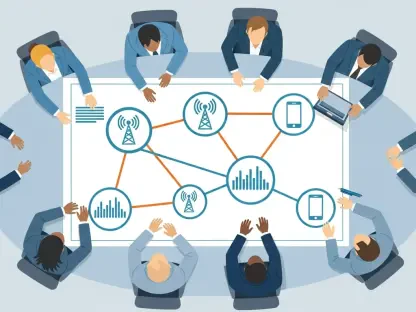Vladislav Zaimov, an expert in telecommunications risk management and enterprise communications, offers invaluable insight into the competitive strategies within the telecom industry. As a seasoned professional, Vladislav understands the intricacies of how major players like T-Mobile navigate their business priorities and manage their network vulnerabilities. His perspective sheds light on T-Mobile’s steadfast commitment to core business principles amid industry distractions, emphasizing unique strategies in digitization and leadership amidst constant market evolution.
Can you explain the importance of T-Mobile’s focus on its core mobile business and how it gives the company an edge over competitors?
T-Mobile’s focus on its core mobile business is crucial because it allows them to streamline their resources and energy into areas where they can achieve significant market penetration. By honing in on providing the best network at the best price, T-Mobile differentiates itself from competitors who may spread themselves thin across multiple strategies. This sharp concentration not only enhances their technological capabilities and customer service but also aligns their offerings with customer expectations more effectively.
How does T-Mobile ensure its leadership team stays focused on core priorities and avoids distractions such as the fiber and FWA strategies?
T-Mobile’s leadership regularly re-evaluates and refocuses their strategic aims to avoid distractions from less impactful ventures like fiber and FWA, which only cover minor parts of revenue. This approach involves constant dialogue about core business aspects and leveraging the “unicorn” status of having the industry’s best network and prices. It’s about maintaining agility in decision-making and ensuring all members of the leadership team play a role in keeping the company centered on its main strengths.
What are the specific challenges T-Mobile faces when competing with AT&T and Verizon?
T-Mobile contends with the larger, established networks of AT&T and Verizon, both of which have extensive resources and extensive coverage. The challenges include fighting for market share in areas where these companies have long-established dominance. T-Mobile must also continually innovate to keep its service offerings as competitive, or more so, than those of its rivals. Balancing aggressive growth with maintaining their current level of service quality is a crucial ongoing challenge.
How does T-Mobile define “the industry’s best network and lowest prices,” and what strategies are used to maintain this position?
“Best network and lowest prices” is defined by T-Mobile through a combination of superior network coverage, advanced technology integration, and competitive pricing models that appeal directly to customer needs. Strategies to maintain this position include significant investments in network infrastructure, technologies like 5G, and a commitment to affordability. All these efforts ensure they remain appealing to both current customers and potential new ones, emphasizing quality and value.
Could you elaborate on T-Mobile’s digitization strategy and the role AI plays in preventing customer pain points?
T-Mobile’s digitization strategy centers around using AI to anticipate and solve customer issues before they balloon into larger problems. By integrating AI into their systems, T-Mobile can analyze data trends and predict potential snags, proactively offering solutions. The T-Life app is a perfect representation of this, acting as a hub for user engagement and demonstrating the practical application of AI in enhancing customer experience through everyday digital interactions.
How has the T-Life app contributed to T-Mobile’s recent revenue growth?
The T-Life app has significantly boosted T-Mobile’s revenue by providing a seamless avenue for customers to upgrade their plans and access new services. Its user-friendly interface encourages frequent engagement, which in turn enhances customer satisfaction and prompts high-value plan upgrades. The app stands as a testament to T-Mobile’s effective use of technology in driving sales and fostering a more loyal customer base.
With Mike Sievert’s potential departure being a topic of speculation, how does the leadership team prepare for such transitions?
T-Mobile’s leadership team prepares for transitions by fostering a culture of continuity and equipping potential successors with the insights and experience required for a smooth shift in leadership. Srini Gopalan’s role, as an insider well-versed with T-Mobile’s operations and strategic goals, illustrates their approach to ensuring there’s no gap in leadership or strategy execution following Sievert’s departure.
Could you discuss T-Mobile’s relationship with Starlink and how it places the company ahead in the direct-to-device space?
T-Mobile’s partnership with Starlink positions them uniquely in the D2D space, particularly through satellite coverage in remote areas where terrestrial towers can’t reach. This relationship enhances T-Mobile’s ability to provide connectivity in otherwise inaccessible places, a significant leap in service delivery compared to traditional network services. It underscores T-Mobile’s commitment to pioneering efforts in expanding connectivity.
What is T-Mobile’s strategy regarding spectrum acquisition, and how does it intend to use EchoStar’s spectrum if it becomes available?
T-Mobile strategically approaches spectrum acquisition with the intention of expanding their service capabilities and coverage areas. If EchoStar’s spectrum becomes available, T-Mobile would likely focus on enhancing their existing spectrum bands to boost network performance and capacity, reinforcing their competitive edge against rivals with a robust communication infrastructure.
How does T-Mobile view the importance of fiber transactions in maintaining its customer base?
While T-Mobile acknowledges fiber transactions’ potential, they believe these are not crucial for retaining their customer base because mobile decisions often aren’t influenced by broadband providers. Instead, T-Mobile emphasizes strengthening their existing mobile services and infrastructure, which inherently ensures customer retention through superior mobile connectivity.
In what ways does T-Mobile distance itself from a “convergence” strategy, and why is this important?
T-Mobile distances itself from convergence strategies to concentrate on the mobile sector where they deliver the most impact and value. This differentiation helps avoid the pitfalls associated with attempting to offer too many varied services, which can dilute focus and cause resources to be spread thin. Remaining focused enables T-Mobile to reinforce its market position and build innovations that directly enhance their core services.
What future goals does T-Mobile’s senior leadership have for continuing to press their advantage in the core mobile business?
T-Mobile’s leadership intends to continuously innovate within the mobile sector, exploring untapped technological advancements and enhancing customer experiences. They aim to sustain their renowned service quality while expanding their customer base through targeted growth strategies. The senior leadership prioritizes efficiency, quality, and affordability, ensuring they maintain and amplify their competitive advantage moving forward.
Do you have any advice for our readers?
Keep an eye on how telecommunications companies like T-Mobile balance innovation with core business priorities. Success often hinges on not just whether a company can adapt to new technologies, but also how well it preserves its strengths amidst industry changes.









